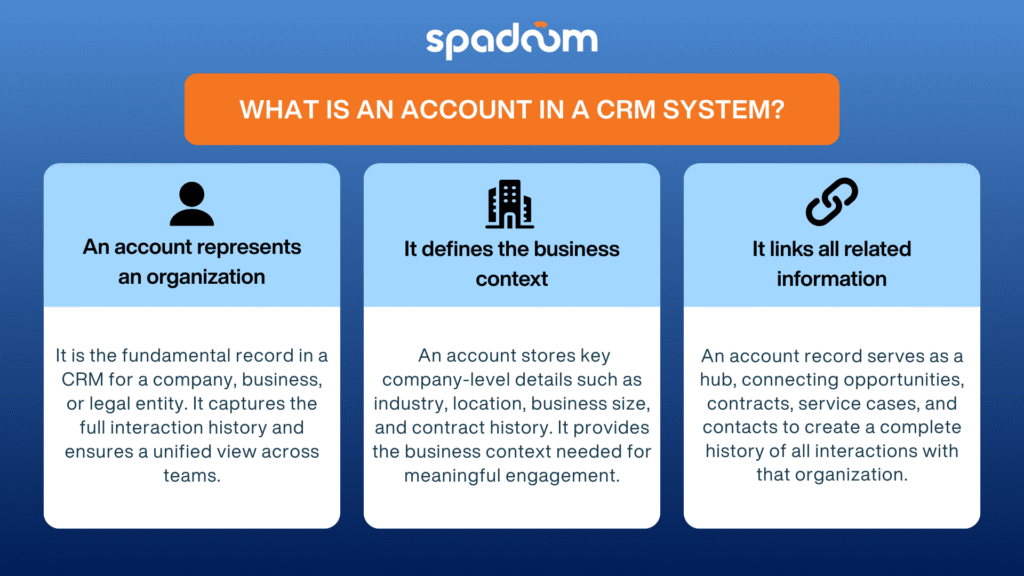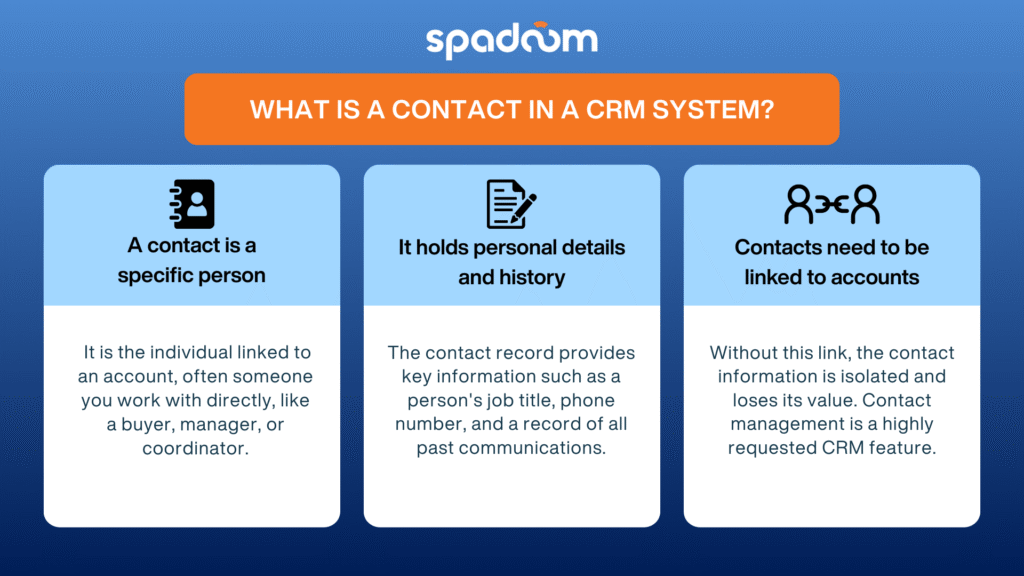Many organizations invest heavily in a CRM system, yet the biggest problems rarely appear in the system itself. They surface when teams confuse who they are actually dealing with. Is the data point referring to a company or to a person inside that company? That single slip creates a chain of errors that ripple through sales, marketing, and customer service.
When accounts, which represent companies, are muddled with contacts, which represent individuals, the damage adds up quickly. Data becomes inconsistent, outreach misses its mark, and entire strategies drift off course.
According to a survey conducted by Validity, 44% of companies believe they lose more than 10% of their annual revenue due to poor CRM data quality. Numbers like that show the cost of overlooking what may seem like a small detail.
In today’s blog, we’ll break down the clear distinction between accounts and contacts, illustrate how mix-ups affect sales and service, and explain why recognizing this difference is essential in turning your CRM into a reliable tool that strengthens growth instead of weakening it.
What is an Account in a CRM system?
In any CRM system, the term “account” refers to a company, organization, or legal entity your business interacts with. It’s the foundational structure for organizing customer records, especially in business-to-business settings. 
Where a contact represents a specific person, an account represents the larger business context they operate within. For example, if your company works with Siemens, the account would hold all information about Siemens as a customer: industry, address, contract history, and related activities.
A well-structured account record links every relevant piece of information back to that organization, from opportunities and contracts to service cases and associated contacts. This prevents information from being scattered across different records and creates a consistent history of interactions.
How CRM Platforms Expand Account Management
Different CRM platforms approach account management with additional features. For example, SAP CRM solutions provide tools for setting up account hierarchies, such as parent and child relationships, or grouping accounts to reflect complex organizational structures.
This is especially useful for companies with multiple divisions, regional offices, or subsidiaries. It enables the CRM system to accurately reflect how the organization operates in real-life situations. With these layers in place, businesses can roll up data more accurately, send the right information to the right team, and make decisions based on a clear view of the full customer relationship.
When accounts are understood this way, they stop being static records and instead become the framework that gives context and meaning to every customer interaction. The next step is to see how contacts fit into that framework and why their connection to accounts determines the accuracy of the entire CRM system.
What is a Contact in a CRM system?
A contact in a CRM system refers to a specific person connected to an account. The account reflects the company, while the contact brings the human side of the relationship. This could be a buyer who approves purchases, a manager who oversees daily operations, or an administrator who handles communication. 
A contact record holds details such as job title, phone number, communication history, and role in decision-making, giving teams the context they need to approach each interaction with clarity.
Contacts gain meaning only when they are tied to accounts. Without that link, data sits in isolation and quickly loses its value. 99firms notes that contact management is the most requested CRM feature, cited by 94% of users. This shows how vital it is for organizations to maintain accurate records of the people behind every transaction and decision.
How Relationships Between Accounts and Contacts Shape Data
Consider a sales team working with a mid-sized manufacturing client. They may need to engage separately with the head of procurement, a finance manager, and a logistics coordinator. Each contact plays a distinct role in the purchase process, but all belong to the same account. Clear records ensure no opportunity is missed and messages stay relevant to the recipient’s role.
Now, take the case of an independent consultant advising several businesses at once. That single contact may be linked to three or four accounts. Here, the CRM must accurately represent the consultant’s connections so teams can see the broader influence of one individual and track interactions across multiple organizations in a single, consistent record.
Why the distinction between Accounts and Contacts matters
One of the most immediate effects of mixing accounts and contacts is the creation of duplicate or incomplete records. When companies and individuals are not clearly separated, the same information can appear multiple times in different places.
Industry estimates suggest that duplicate records make up between 10 to 30% of CRM data, which shows just how much accuracy depends on getting this distinction right. Fixing this upfront prevents wasted time, reduces miscommunication, and gives every customer interaction a stronger foundation.
The difference also shapes how reporting and analytics work. Accounts carry the financial picture, such as revenue attribution and contract value, while contacts provide detail on the people driving those numbers.
When both are handled properly, reports are not only more reliable but also more actionable. Studies indicate that report accuracy improves by as much as 42% when CRM systems are used correctly, reflecting the impact of defining roles clearly within the data model.
Finally, understanding the split between accounts and contacts makes customer relationships easier to manage. Accounts show the buying power of the company, while contacts highlight who holds influence inside that company. Together, they give teams the perspective needed to plan strategies that align with both organizational goals and individual motivations.
Make Your CRM Work Smarter with Spadoom
Getting the distinction between accounts and contacts right is the first step, but putting it into practice across a CRM system requires expertise. At Spadoom, we help organizations structure their SAP CRM solutions so that data stays accurate, reporting is reliable, and customer relationships are easier to manage.
As SAP experts in DACH, we’ve helped many organizations bring more structure and clarity to their CRM environments. Our consultants focus on building account hierarchies, linking contacts effectively, and setting up processes that mirror how your business actually works. The result is a CRM environment where sales, marketing, and service teams can collaborate with confidence and act on insights they can trust.
Contact us today to see how Spadoom can help you turn a well-structured CRM into a driver of measurable growth and stronger customer connections.
Frequently Asked Questions (FAQs)
What is the difference between account and contact?
In a CRM, an account refers to a business or organization. A contact is an individual associated with that account, typically someone you engage with directly, such as a buyer or decision-maker.
What is the difference between contact and person account?
A contact is tied to a business account, typically used in B2B settings. A person account blends contact and account fields to represent an individual consumer, ideal for B2C use cases.
What is the difference between a customer and a contact?
A customer is the entity, either a person or a company, that buys from you. A contact is someone within that customer’s organization who you interact with. One customer can have multiple contacts.
Why is it important to separate contacts from accounts in a CRM?
Keeping accounts and contacts distinct avoids duplicate records and improves data quality. It also enables personalized communication and ensures more accurate reporting, which is essential for aligning sales and marketing efforts.
How does confusing accounts and contacts impact CRM reporting?
Mixing up these roles can distort revenue attribution and relationship metrics. You risk underreporting engagement, misassigning deals, and missing key decision-makers in your outreach.



